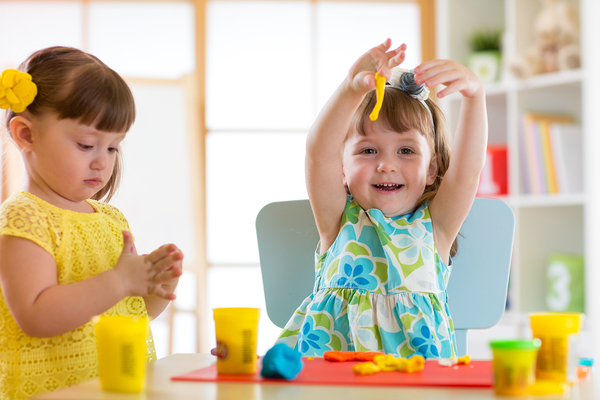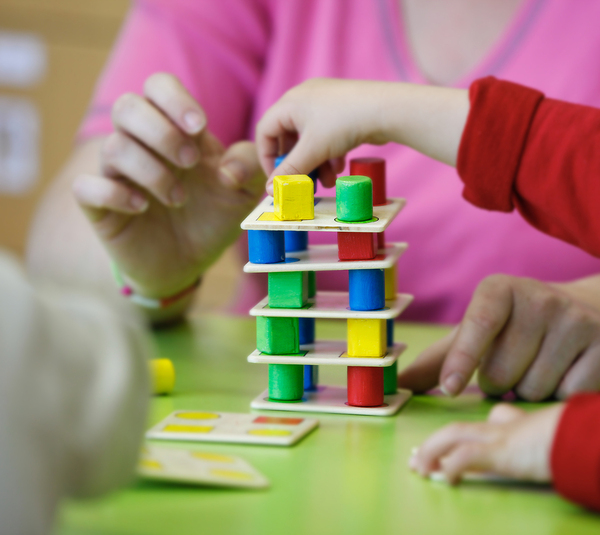Before your child can tie their own shoes, zip up their own coat, handle a fork and spoon without making a mess, or write legibly with a pencil, they have to develop the fine motor skills that will allow them to perform those tasks. Before their fine motor skills are fully developed, it can be frustrating for toddlers and preschoolers to attempt to perform those tasks and fail. Each child develops in their own time, but activities that promote the development of fine motor skills can minimize frustration in the meantime. And fine motor activities can be fun! Take a look at a few fun fine motor skills activities.
Create With Play Dough

Encourage artistic creations with play dough to give your child’s fingers a workout.
Kids love making shapes and objects with colorful blobs of play dough, but this activity is more than just play or a fun craft activity for your child. The acts of kneading and manipulating the dough, or just squishing it through their fingers, strengthens the muscles in your child’s hands.
To help your child enhance their fine motor skills further, don’t stop with just the dough itself. Rolling pins, cookie cutters, and plastic knives can all be used to manipulate the dough into different shapes, and using these tools helps your child further strengthen those skills.
Threading
Threading items not only requires dexterity, it also takes some hand/eye coordination and patience in order to do it correctly, so it helps your child practice several skills at once. And threading is an important precursor to skills like shoe tying.
Start with easy-to-thread items, like oversized plastic beads with large holes and colorful yarn that’s easy to see. You can also punch holes in poster board and have your child thread yarn through the holes. Cut the poster board into shapes and punch holes around the outline of the shape so that your child will be creating a colored outline of the shape with their yarn. You can gradually progress to smaller beads and finer thread as your child’s dexterity improves.
Build With Blocks

Stacking blocks can also help teach your child about balance.
Picking up and stacking blocks is not just a fun fine motor skills activity, it’s also a great way for your child to be inventive and creative with a fairly simple type of toy. There are a variety of different types of blocks out there as well, which means that you can use them through several different stages of your child’s development.
For example, babies can start stacking large blocks early on, as soon as they’re able to sit up and hold the block. You can move to smaller blocks as your child gains dexterity. When your child is ready for a new challenge, they can move onto interlocking blocks, which also come in large and small varieties. Pushing down on the block to ensure that it snaps into place takes more muscle movement than simply stacking. Be sure to save the smaller interlocking blocks until you’re sure that your child won’t swallow them.
Practicing fine motor skills doesn’t need to be a chore—ideally, it should just be another form of play for your child. These fun activities will give your child the tools they need to tackle many daily living activities later on.
